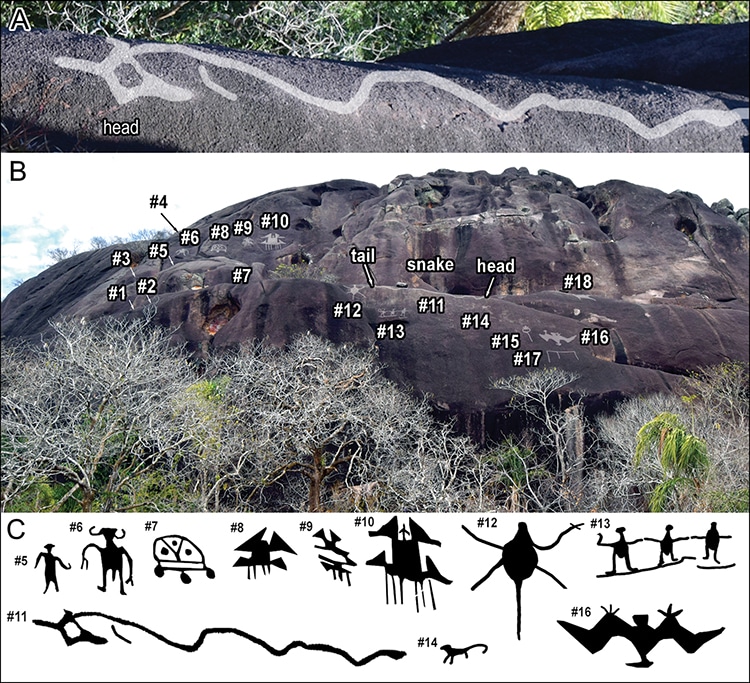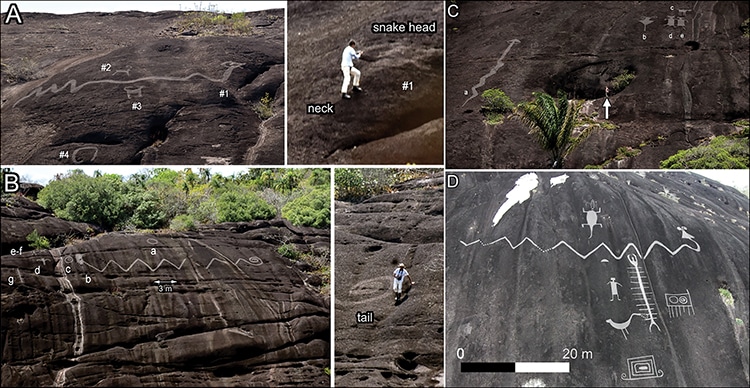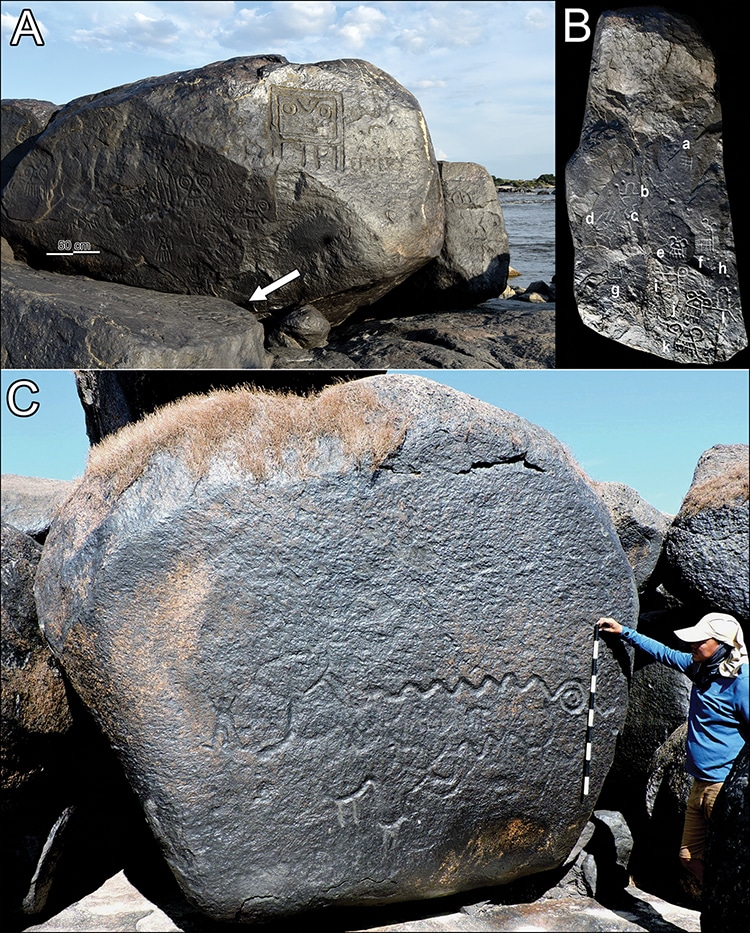Snakes and other figures engraved at Cerro Dagua.
Archeologists devote countless hours to uncovering, documenting, and interpreting ancient art.
Among the more recent papers to interpret ancient South American artwork was published inAntiquity.

Snakes and other figures engraved at Cerro Dagua. (Photo:Riris et al.,CC BY 4.0)
Their findings shed light on the the sheer amount of carvings and the impressive size of certain monumental snakes.
Sixty of the engravings stretched an impressive 30 feet or more.
The team has dubbed these engravings asmonumental.

The monumental snake engravings at different sites. (Photo:Riris et al.,CC BY 4.0)
The large examples includeamong a startling amount of snakesa massive 130-foot-long serpent etched into the rock.
Who carved these pictographs, when and why?
They may have been carved by Indigenous Piaroa artists or others from nearby tribes.

Non-monumental motifs that also appear at monumental sites: A) anthropomorphic mask motif (known as ‘the television’) at Raudal Mesetas, see also Cerro Pintado and Caño Grulla (Figure 2F & K); B) flat boulder alongside A (arrow) with stylised anthropomorphic and double scroll motifs; C) snake, bird and human motifs at Raudal Palomazón. Note size of the snake relative to other motifs (figure by authors). (Photo:Riris et al.,CC BY 4.0)
The Piaroa, like others in the region, have ancient beliefs about snakes.
Why the reliefs were carved is uncertain.
However, the authors noted that many were at the ancient river level around the time of carving.
Given the size of the monumental figures, they’d be quite visible from afar.
This visibility, the authors postulate, is the purpose.
The monumental snake engravings at different sites.
Note size of the snake relative to other motifs (figure by authors).